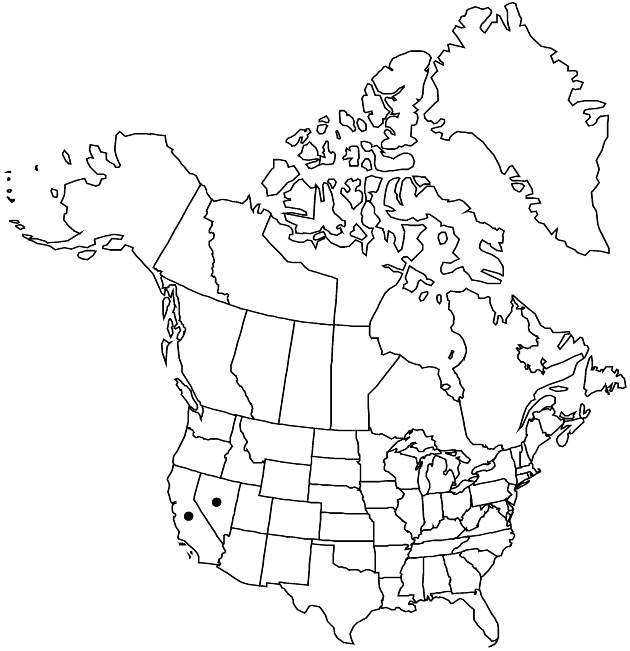Tetradymia tetrameres
Brittonia 26: 192. 1974.
Endemic
Basionym: Tetradymia comosa subsp. tetrameres S. F. Blake Proc. Biol. Soc. Wash. 35: 176. 1922
Shrubs, 30–200 cm. Stems 1–10+, erect (wandlike), unarmed, evenly pannose. Leaves: primaries linear-filiform, flaccid, 10–40 mm; secondaries filiform-spatulate, 10–20 mm, sparsely tomentose. Heads 4–6. Peduncles 1–3 cm. Involucres turbinate, 8–9 mm. Phyllaries 4–5, oval-elliptic. Florets 4–5; corollas pale-yellow, ca. 8 mm. Cypselae 5–6 mm, densely pilose (hairs 4–7 mm); pappi of ca. 20, coarse bristles or subulate scales 3–5 mm. 2n = 60.
Phenology: Flowering late spring–early summer.
Habitat: Deep sands or dunes, sagebrush scrub
Elevation: 1200–2100 m
Discussion
Selected References
None.
Lower Taxa
None.
... more about "Tetradymia tetrameres"
introrse +
connate +
papillate +
truncate-penicillate;usually truncate;rounded-truncate +
scarious +
hispidulous +
papillate +
continuous +
decurrent +
nerved +
linear;filiform narrowly lanceolate or oblanceolate +
winged;nerved;ribbed +
1;15 +
stigmatic +
persistent +
coarse +
absent +
not 2-lipped +
pale-yellow +
8 cm80 mm <br />0.08 m <br /> (?) +
monomorphic +
5-ribbed +
pilose +
5mm;6mm +
staminate +
straight +
distinct +
proximal +
4;5 +
bisexual +
dispersed +
discoid +
singly +
indeterminate +
4;6 +
surrounding +
turbinate +
sessile +
alternate +
cauline +
recurved +
scarious +
2-carpellate +
inferior +
attached +
anatropous +
absent +
tough +
thick +
absent +
connate +
oval-elliptic +
persistent +
distinct +
herbaceous +
falling +
erect +
subequal +
equal +
linear-filiform +
flaccid +
Brittonia +
1974 +
absent +
epaleate +
foveolate +
conic;usually flat;convex +
fibrous +
white;stramineous +
subulate +
tomentose +
filiform-spatulate +
exalbuminous +
modifed +
1;2 +
Endemic +
alternate +
unarmed +
erect +
pannose +
2-branched +
glabrous +
papillate +
Tetradymia tetrameres +
Tetradymia +
species +
dilated +
longer +
